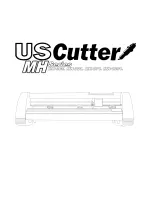
8
3. Move the ON/OFF switch to the ON position. Observe the rotation of the hole saw and pilot
drill, making sure it is running straight and true. If they wobble, or any other issues are noted,
move the switch to OFF and unplug tool, fix any issues prior to using. Keep fingers, hands
and clothes away from the turning chuck to help reduce the risk of entanglement.
4. Place both hands on the hand wheel and advance the pilot drill into contact with the pipe.
Apply firm pressure, and start drilling the pilot hole. Do not force the pilot drill/hole saw. This
can overload the hole saw and the tool motor and cause premature failure.
Once the hole saw is in contact with the pipe, continue to apply firm pressure. Depending on
the size and wall thickness of the pipe and the size of the hole being cut, the hole saw may
need to be retracted slightly at times for chip removal. If needed, the Hole Cutting Tool can be
shut off and a small amount of appropriate cutting lubricant applied to the work piece. Do not
apply lubricant while the tool is running, this increases the risk of entanglement. Take
appropriate steps to prevent the lubricant from dripping or being thrown during use. As the
hole saw moves through the pipe and as the cut is completed, there will be an interrupted cut
at times. Decrease pressure as this occurs to help prevent jamming of the hole saw.
5. Once the hole is complete, retract the hole saw from the pipe and switch OFF.
6. Reverse the mounting procedure to remove the Hole Cutting Tool from the pipe. Make sure
you have secure grip on the Hole Cutting Tool prior to loosening the chain.
7. If the pipe slug needs to be removed from the hole saw, always make sure that the
ON/OFF switch is in the OFF position and the Hole Cutting Tool is unplugged before
removing. Remove the slug with care, the slug may be hot and edges can be sharp.
Cutting in process



























